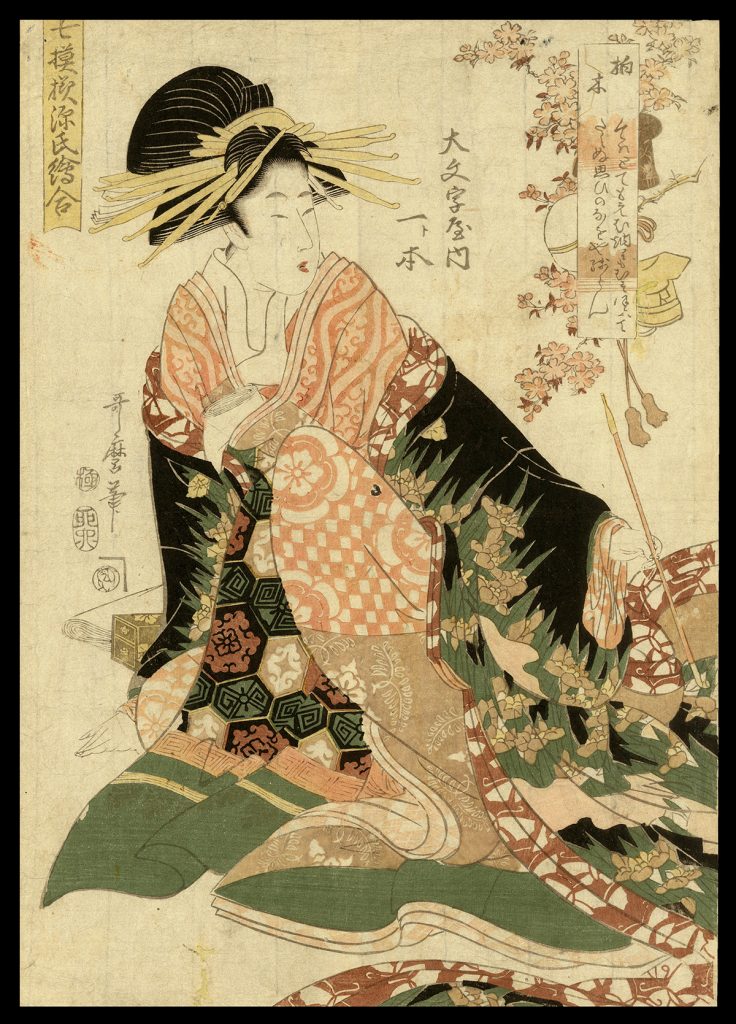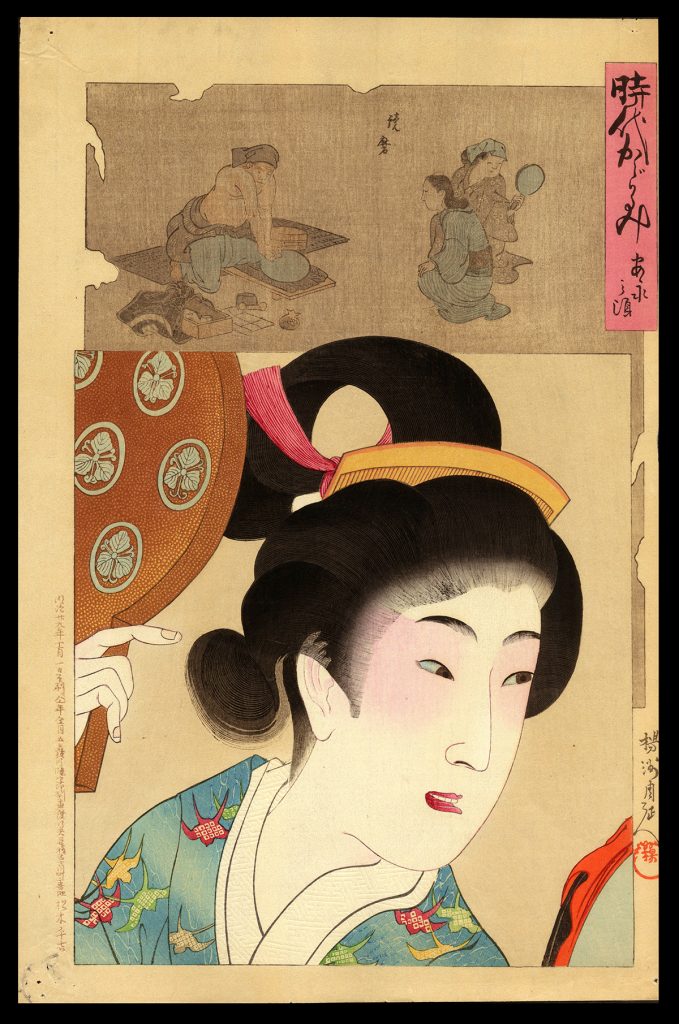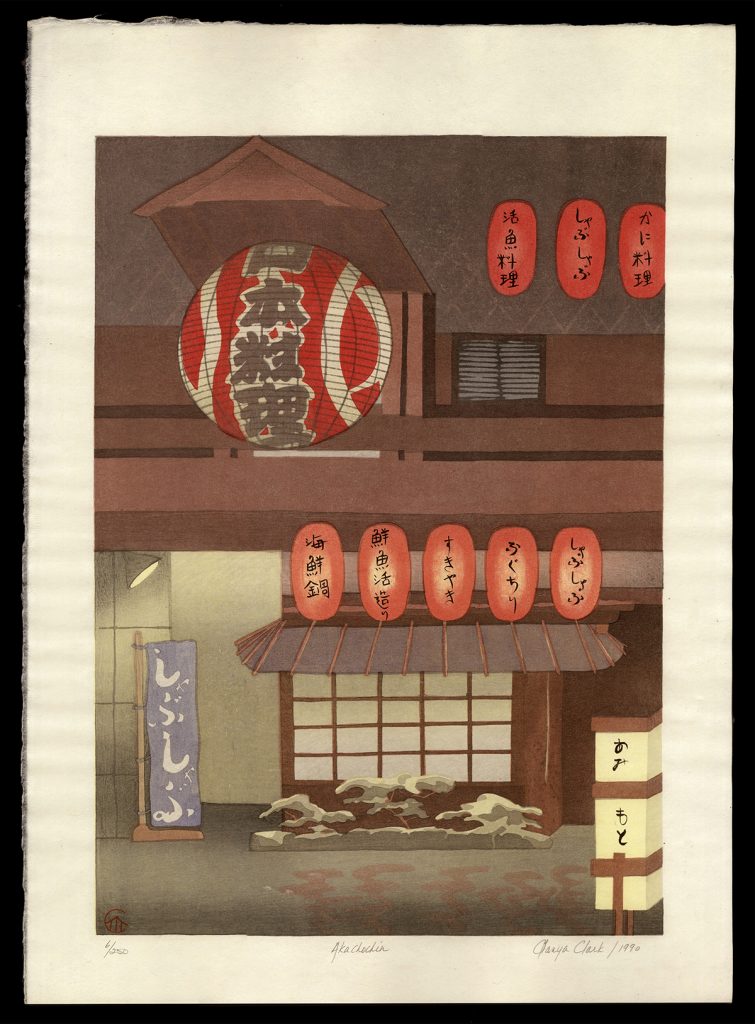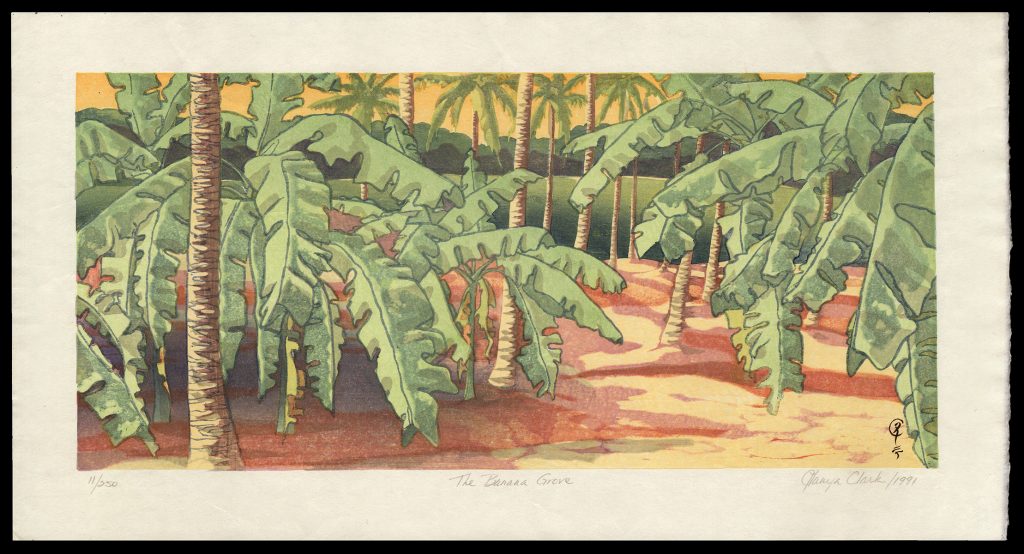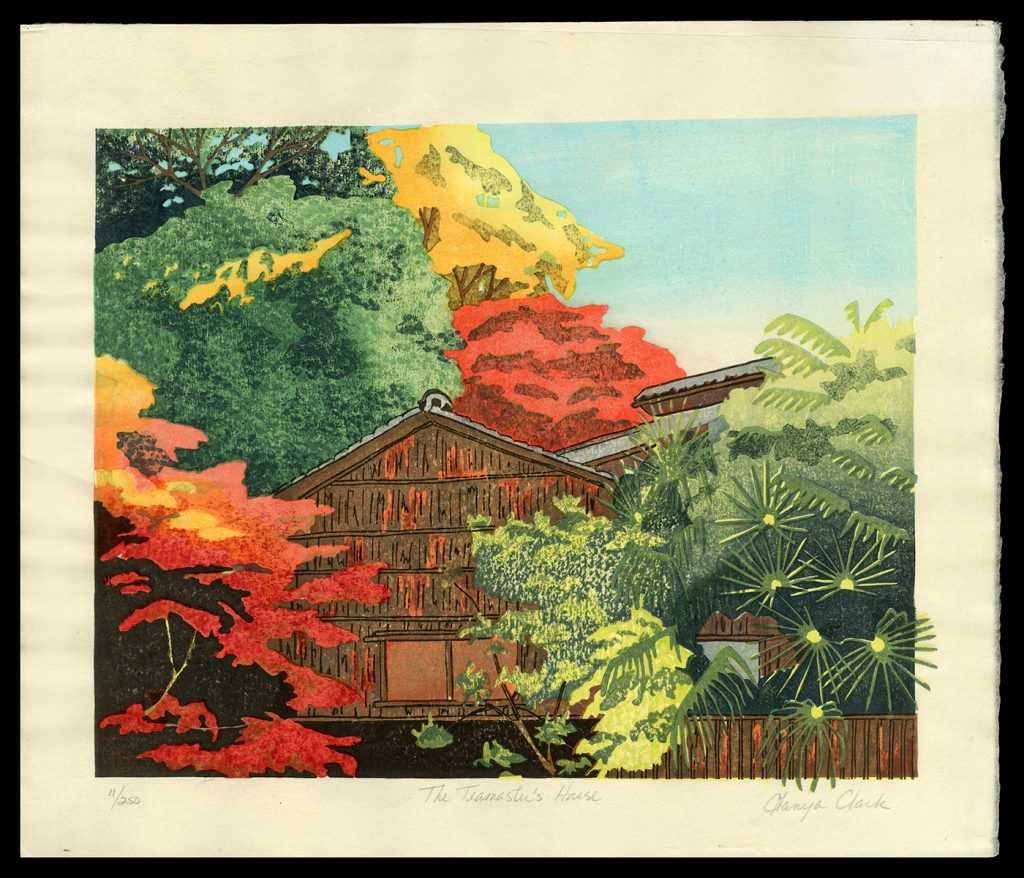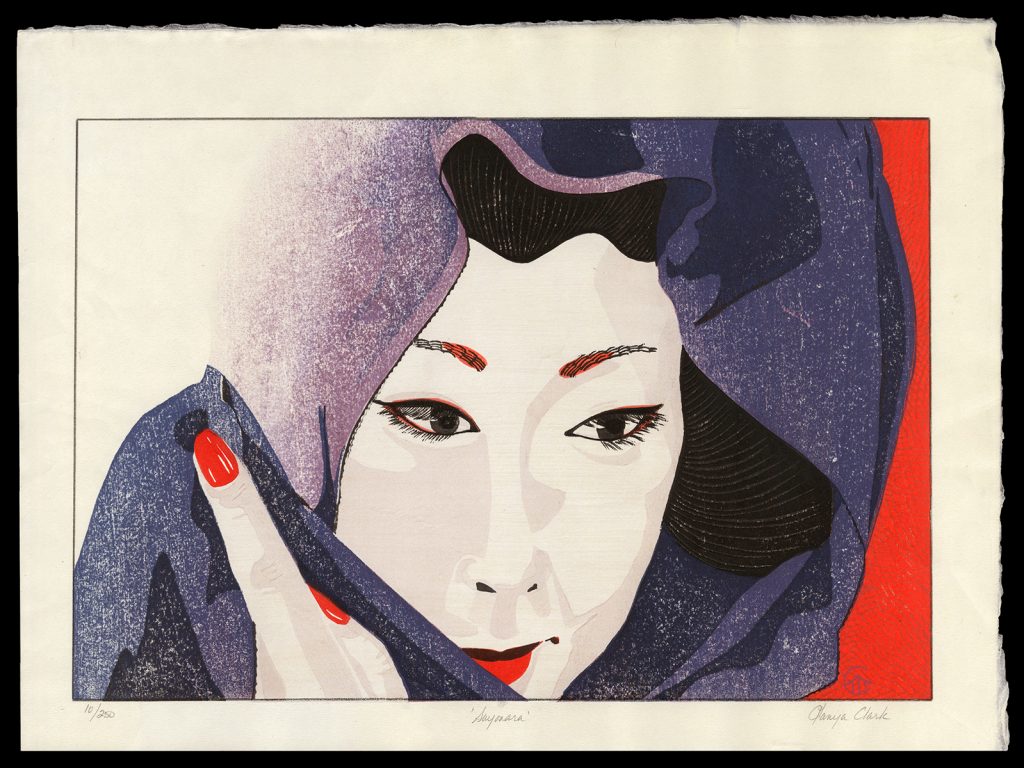BLOG
FaceBook Posts for 2021 Christmas in July Auction
Posted on July 12, 2021Posted July 22: Artists and Their Preferred Subjects or Instant Collection
Artists and Their Preferred Subjects or Instant CollectionIt was especially common in the 20th century, especially for artists whose works were published by The Watanabe Color Print Co., to have a “thing”. Hasui designed landscapes, Shinsui designed beauties, Shunsen designed actors, Shoson designed birds, flowers, and animals and so on. This tradition can also be seen in sosaku hanga and contemporary prints – Hoshi designed trees (after a brief flirtation with constellations), Nakayama designed horses, Ayo designed with rainbows and Kuroda designed bicycle riders with umbrellas. In our Christmas in July Auction, we have a group of 6 etchings by Shigeki Kuroda, all with bicyclists with umbrellas – or as we like to call it, an instant collection. They appear at lots 143-148.

Lot 143 – For Rent 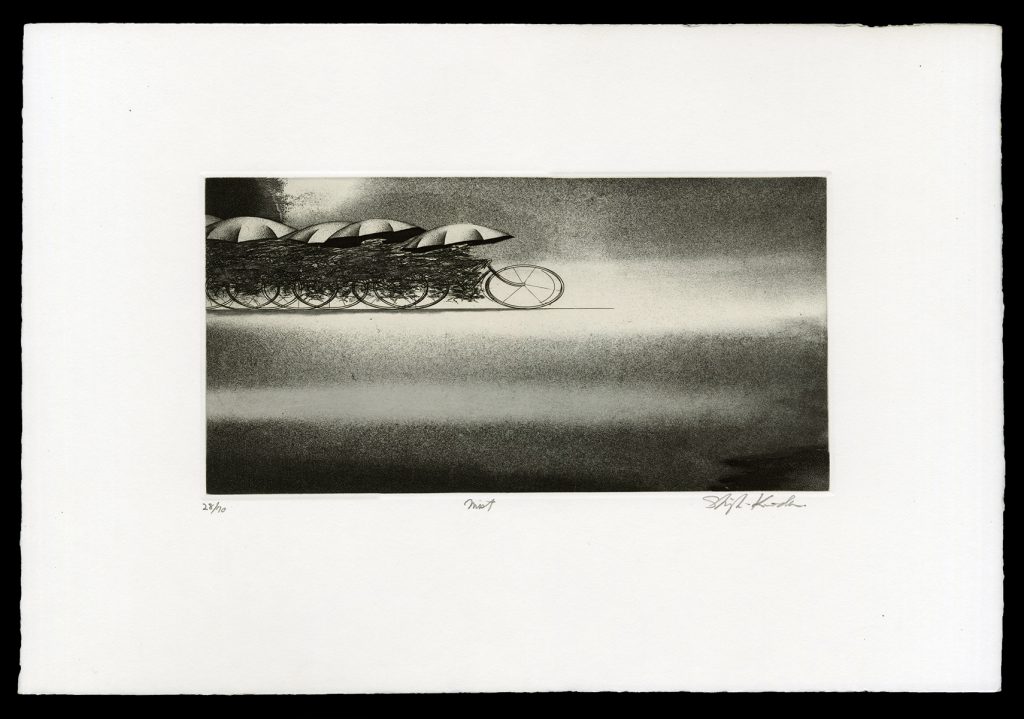
Lot 144 – Mist 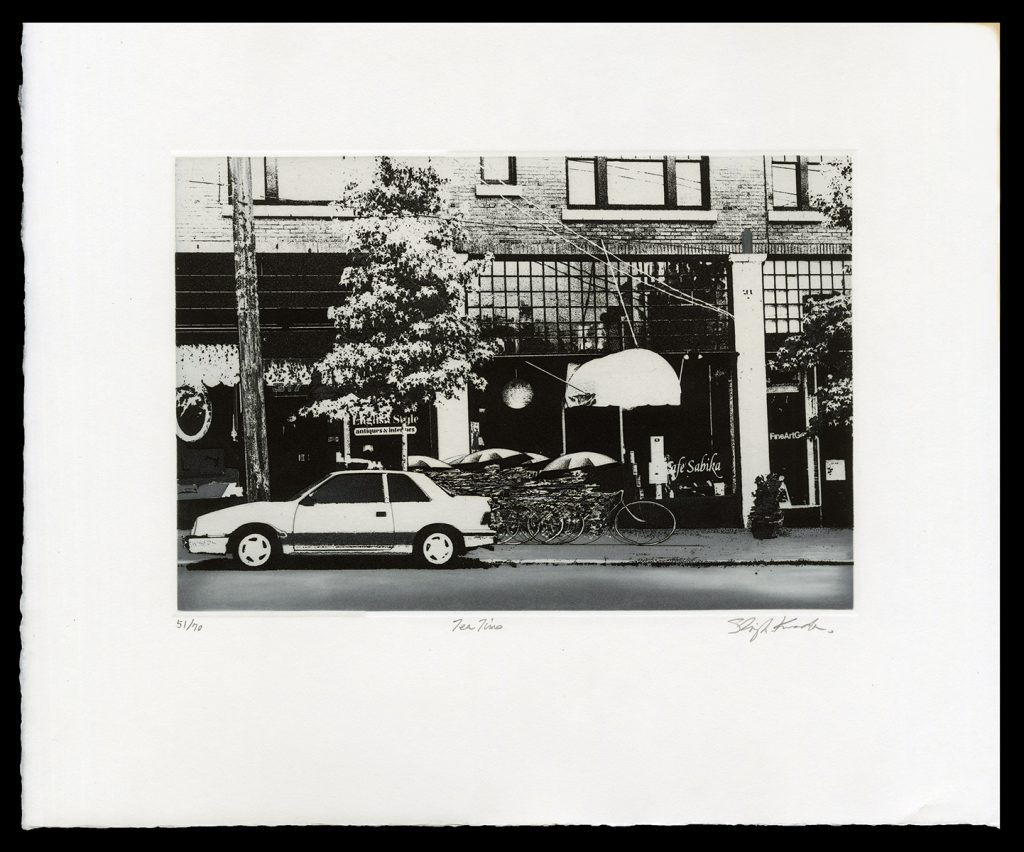
Lot 145 – Tea Time
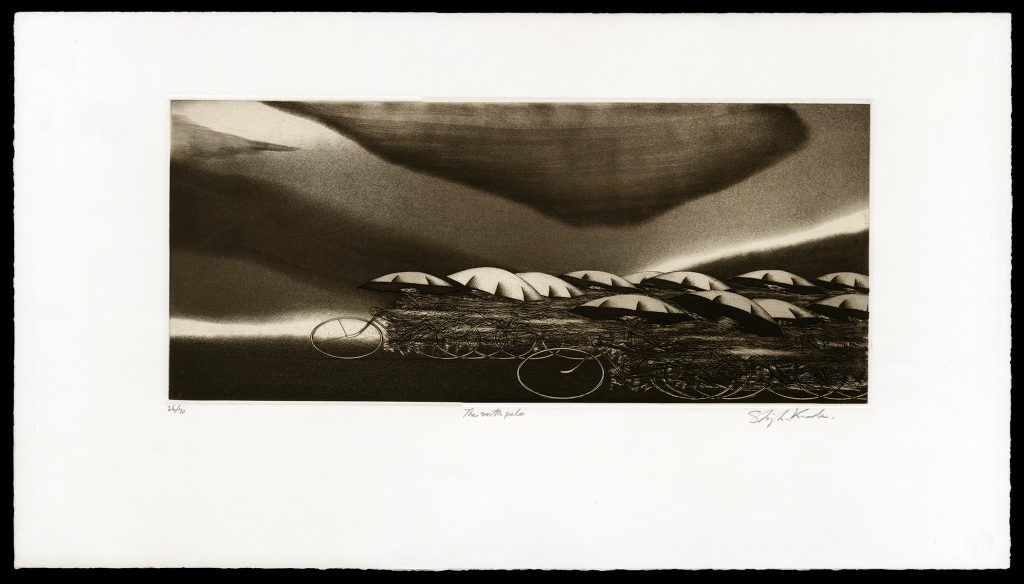
146 – The North Pole 
147 – The Ivy Home 
148 – Untitled
Posted July 21: Making the Case for Atozuri Prints
The term “atozuri” prints was introduced by Shoichiro Watanabe, the grandson of Shozaburo Watanabe, who currently owns and operates The Watanabe Color Print Co. It has become synonymous for later printings of shin hanga prints, made from the original blocks. The Yoshida family, and its printing/publishing business, Yoshida Hanga Studio, has a long history of producing posthumous prints from the original blocks, which began shortly after the death of Hiroshi Yoshida in 1950. Unlike the lifetime printings, which always have a Japanese brush signature, typically have a jizuri seal, and usually have an English title (except when intended for the Japanese market), both the Japanese and English signatures are printed. Because the technique and pigment used for the English signature closely resembles pencil, however, the key item to look for to determine is a printing is posthumous is the absence of a jizuri seal. (There are exceptions, and plenty of information about the exceptions is available online.)We have many posthumous Yoshida works in our auction on Saturday, including the three included shown in this post. We selected these designs to highlight, because the lifetime printings of each is significantly more expensive than the average lifetime Hiroshi Yoshida print, due to the size and/or scarcity.

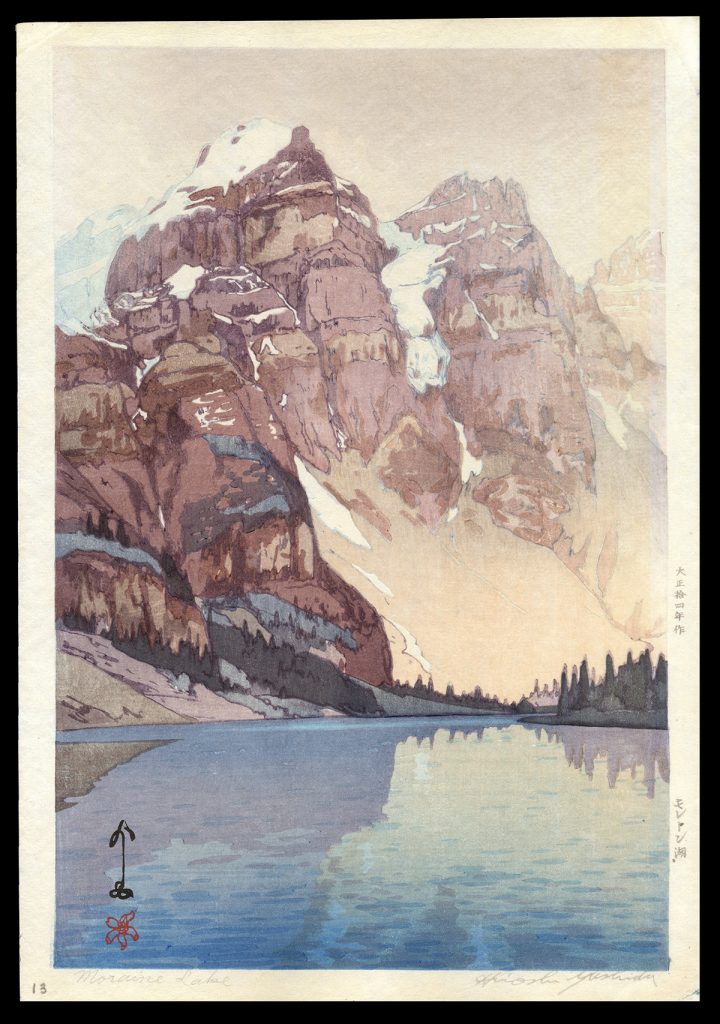
Lot 81: Moraine Lake 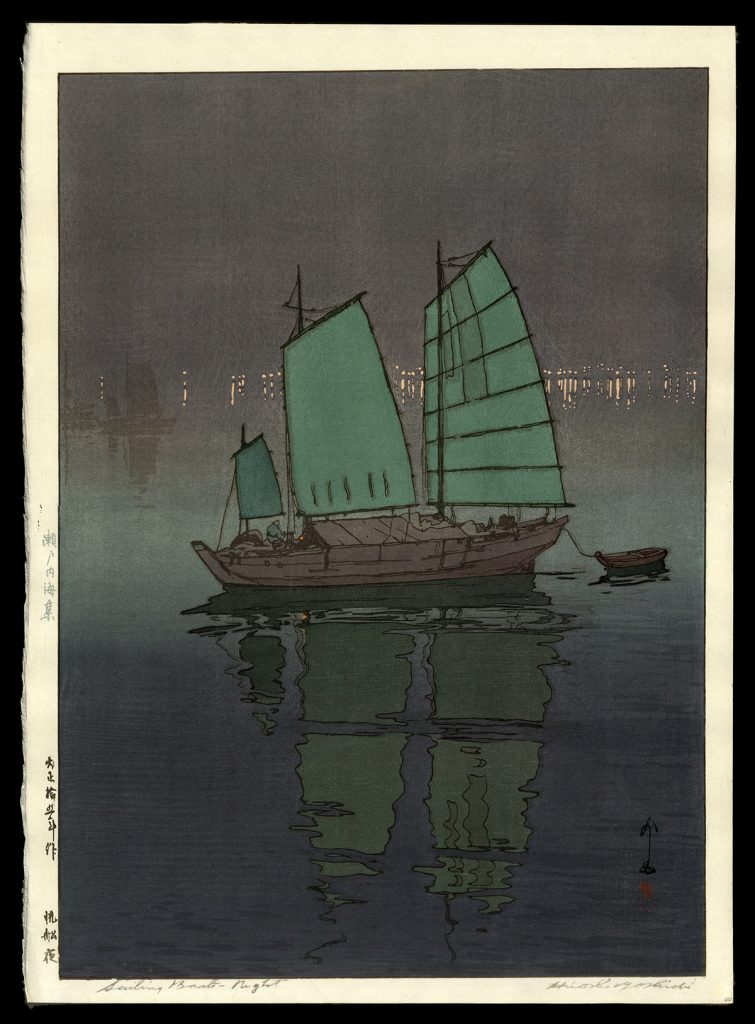
Lot 82: Sailing Boat Night
Posted July 20: The Tale of the Blind Man and the Elephant
The tale of the blind men and an elephant is a story of a group of blind men who have never come across an elephant before and who learn and conceptualize what the elephant is like by touching it. Each blind man feels a different part of the elephant’s body, but only one part, such as the side or the tusk. They then describe the elephant based on their limited experience and their descriptions of the elephant are different from each other. In some versions, they come to suspect that the other person is dishonest and they come to blows.
In much the same way, many of the 19th century ukiyo-e artists had no real experience with actual elephants, so when illustrating them in prints, based their images on the resources available to them. In 1818, Hokusai included an image of the blind men and elephant story in volume 9 of his manga set. Elephants were also unartfully illustrated in Dutch engravings that were available in Japan. These were likely the resources available to Kuniyoshi when he designed Taishun and the Elephants, as part of his Mirror of the Twenty-four Paragons of Filial Piety series, from 1840.
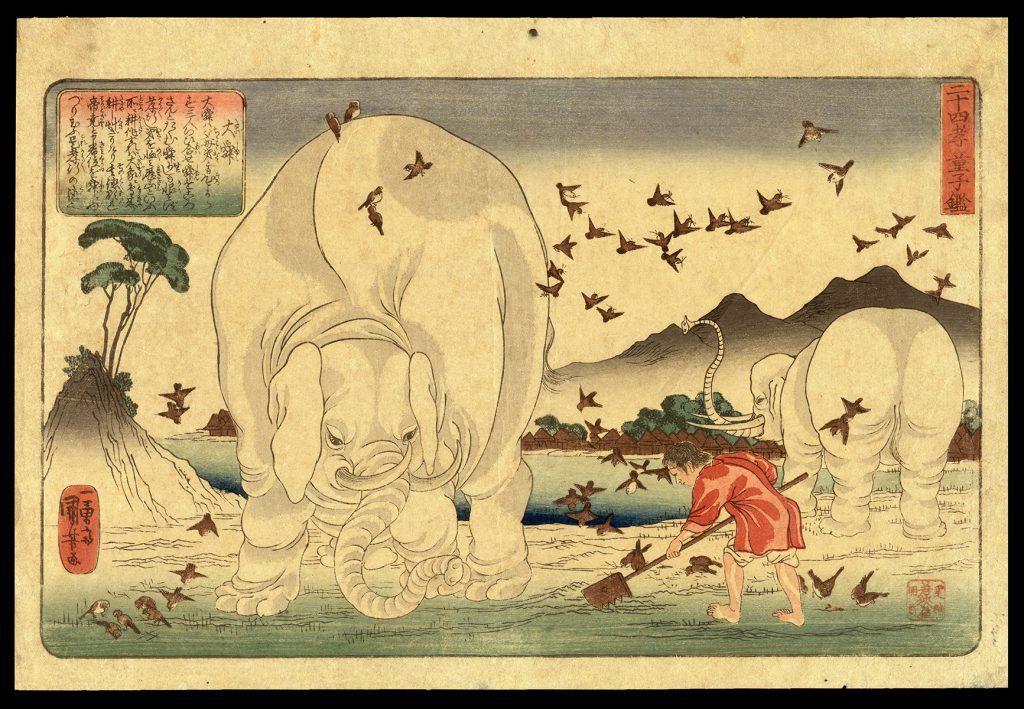
Posted July 15: We’ve Got Some Real Beauties in our Auction 20th Century Edition
Here are some of the 20th century bijin-ga (prints of beauties) in our Christmas in July Auction.
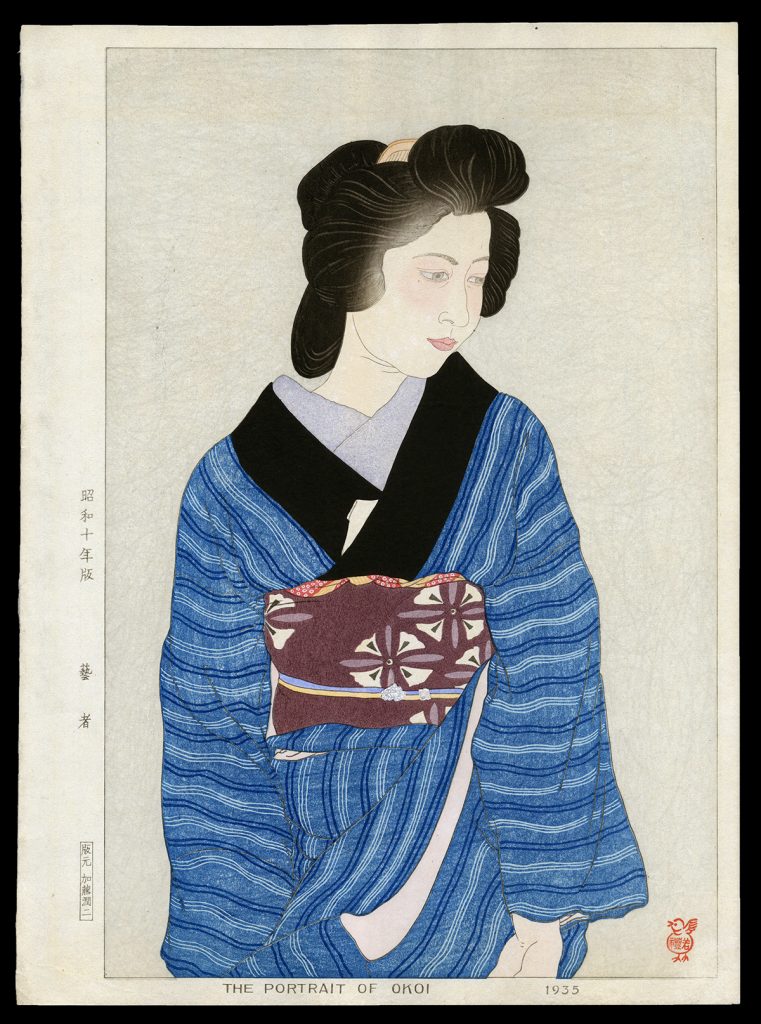
Lot 40: Paul Jacoulet 
Lot 78: Shimura Tatsumi 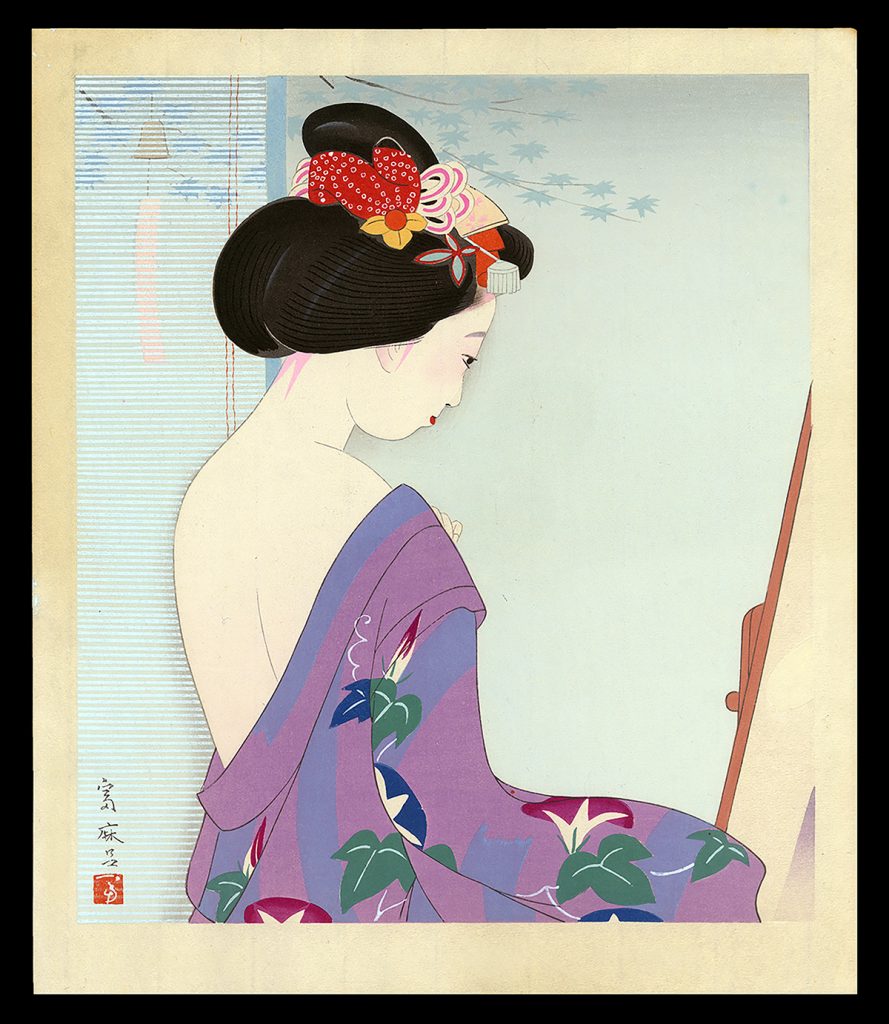
Lot 178: Higuchi Tomimaro
Posted July 14: We’ve Got Some Real Beauties in our Auction – Ukiyo-e and Meiji Edition
Bijin-ga, or prints of beauties, are a popular subject matter in Japanese woodblock prints. Take a look at some of the Ukiyo-e and Meiji period beauties in our upcoming Christmas in July Auction, exclusively on the LiveAuctioneers platform. Links to each lot appear in the chart below.
Posted July 13: Introducing the Woodblock Prints of Tanya Clark
Let us introduce you to Tanya Clark (b. 1954), a formally trained Canadian artist, who moved to Tokyo in 1985 to study under Toshi Yoshida. In 1991, her work was awarded ‘Gold for a New Member’ at the Nihonhangakai, the largest international juried competition for woodblock prints. After five years in Japan, Tanya relocated to Phuket, Thailand and then in 1994 Tanya established herself in Anguilla in the Caribbean.
We have four works by Tanya in our upcoming Christmas in July Auction. Click on the image to view the lot.
Posted July 10: Second Chance to Own a Sea Monster
Do you regret not bidding on that Kuniyoshi Sea Monster design (Kuwana: The Story of the Sailor Tokuzo, from the series Fifty-three Pairings for the Tokaido Road) in our June Auction? Or did the $1100 final hammer price scare you off?
We have a very similar, albeit much smaller design in our annual Christmas in July Auction. Take a look at Lot 248. It is Kuwana, from the ehon (book) Tokaido Pairs, 1851, and bidding started at $20. The designs in this Tokaido set are signed Sadahiro and Sadayoshi. The prints in the set correspond precisely to the designs in the Fifty-three Pairings for the Tokaido Road set, with one notable exception. It begins in Kyoto at Sanjobashi, and ends up in Edo (Tokyo) at Nihonbashi.
Here are direct links to each:
Kuwana:
Sadahiro: https://bit.ly/3k8nuUi
Kuniyoshi: https://bit.ly/3hUP5Wk

Lot #: 248: Kuwana, from Tokaido Pairs, 1851 by Sadahiro (fl. 1825-75) 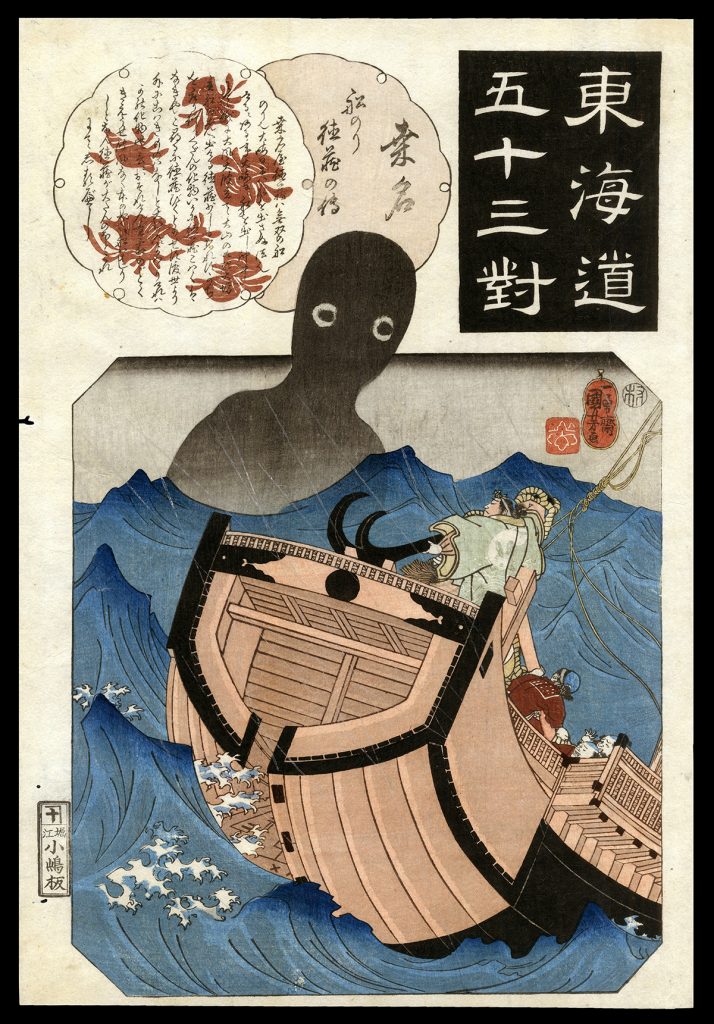
Lot 86: Kuwana: The Story of the Sailor Tokuzo, from Fifty-three Pairings for the Tokaido Road, 1845-46 by Kuniyoshi( 1798-1861)
BACK TO POSTS
